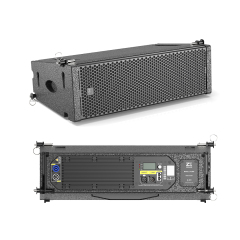One of the most important factors to provide high quality concert audio is a powerful and efficient stage sound system. The components of the system must work in tandem to provide distortion-free, balanced, powerful sound that can reach each and every part of a room.
Speakers comprise the driver of every single relate sound framework, and in large beginnings line array speakers are coveted. These speakers are intended to provide equal sound coverage throughout the array, with every unit in that arrangement working together to create a completely uniform audio experience for all listeners. Power handling capacity of the speakers is also an important factor; a regular line array speaker may work something around 500 – 1000 watts, which will stop these considerable noises from overloading.
This is another necessary element and does the job of boosting this low level audio signal to form it at a power so that your speakers has an application correctly. Not matching the wattage of an amplifier to speakers can create bad sound, and powering too many watts from one amp output may damage your system. For a single stage sound system multiple amplifiers may be required, each delivering many thousand watts of power to house and monitor speakers as well subwoofers in array zones.
Mixing consoles are essentially the brains of a tour's stage sound system — where you'd mix and balance all incoming audio signals from most sources (microphones, instruments) to an appropriate level. Some of them maybe portable, and others huge rack type systems with 24/32 or more input channels. For instance, in a mid-sized venue, you may use something like an 32-channel digital mixing console to give you very precise control of every element within the performance. Digital consoles are all the rage amongst industry professionals for reasons of flexibility and ability to store/recall settings during tour with multiple performances.

The sound on stage is captured by microphones and the better quality they are, the more reliably your whole system will perform. Because the condenser microphones are so much more sensitive and have a higher frequency response they work really well with vocals as compared to dynamic microphone that is generally preferred over instrumental miking especially in high SPL(Sound Pressure Level) condition like rock concerts. This allows for a greater specificity in the choice of mics, from industry standards such as Shure SM58s (very durable and trustworthy on vocal), to ad-hoc performers with only USB versions lying around.
This is where your audio signals flow to be processed, edited by signal processors that include EQs for tone sculpting or corrective measures, compressors and reverb units helping them sound polished ass they reach the amps driving the speakers horns woofers etc. Sound engineers use these processors to shape audio, attenuate signals of undesirable frequencies and dynamic range control, and add effects that help the final sound. A graphic equalizer, for example, would enable the engineers to easily tweak the frequency response of an entire audio system so that it was honest and smooth at all frequencies.
But a very basic necessity in stage sound system which we mostly ignore is cables and connectors. The use of high quality shielded cables is essential to avoid losses or interferences in the signal, guaranteeing clear and clean sound. In live performance situations where equipment is regularly being set up and tear down, the durability and dependability of these cables simply cannot be overlooked.
For individuals looking to construct or expand a stage sound system, these components and their use is very important. Everything from speakers and signal processors to carved elements must be chosen, or even designed specifically for the venue in order to perform as part of a system : creating something that best serves the purpose required, how it is then delivered, will affect whether an audience walking away with smiles on their faces.